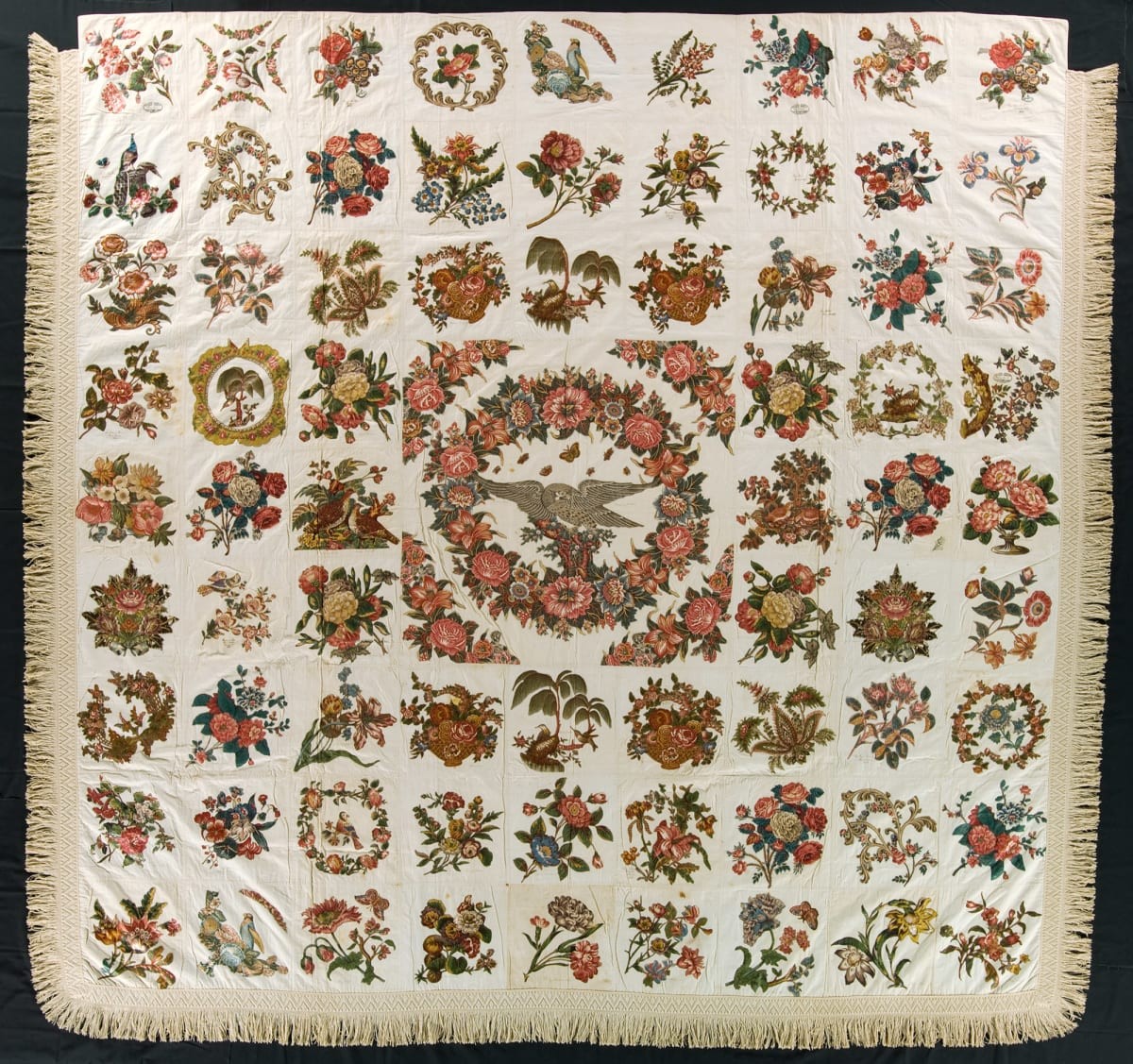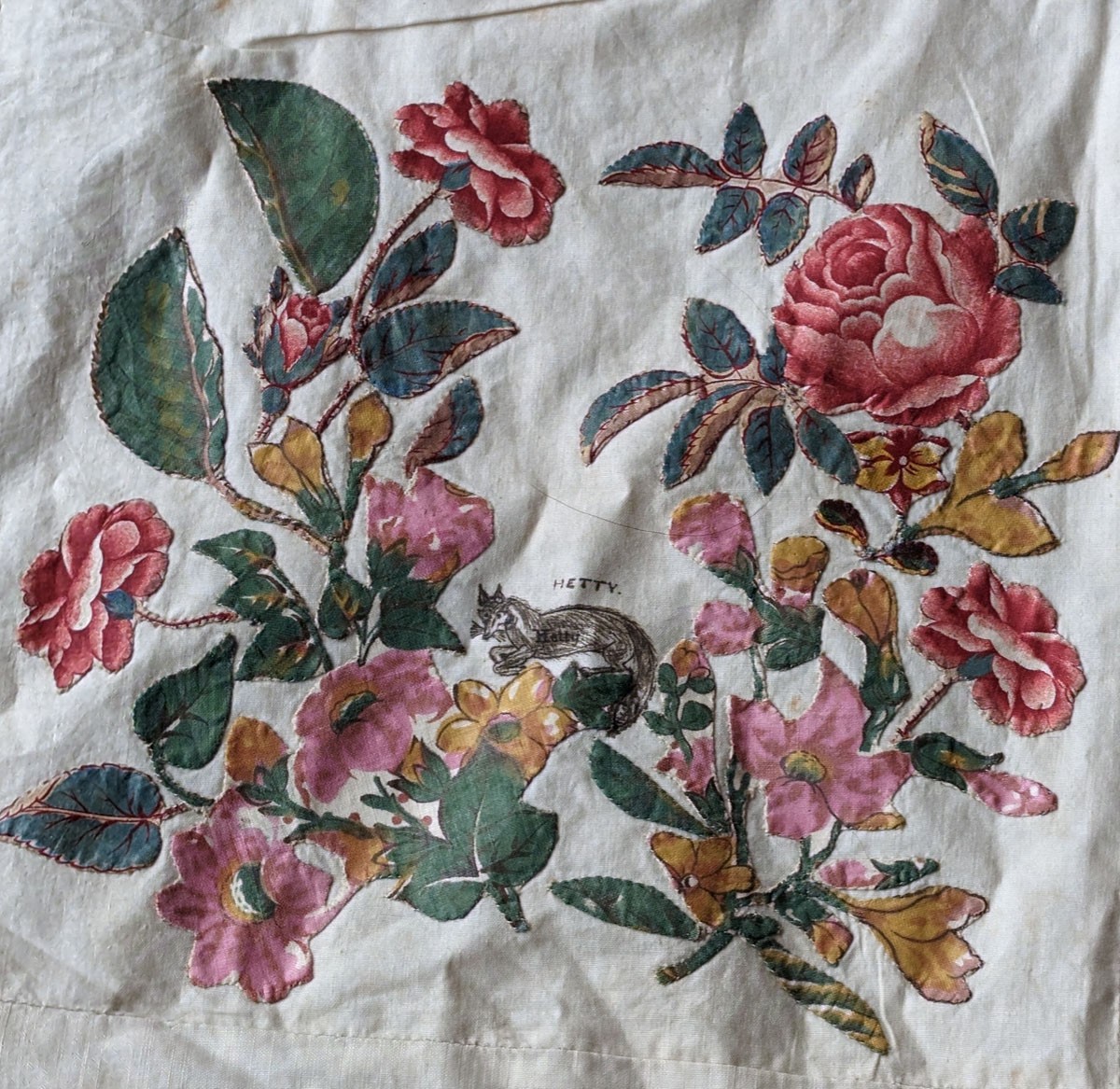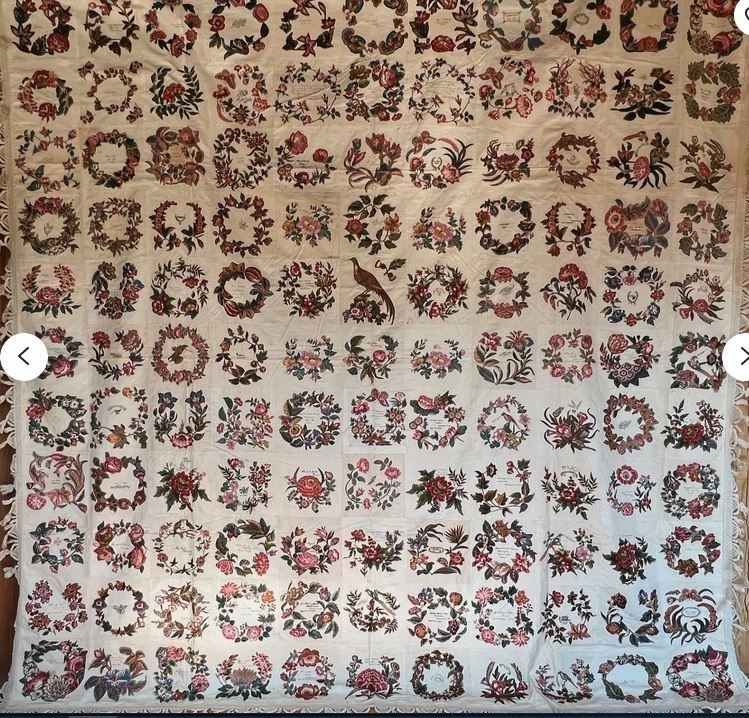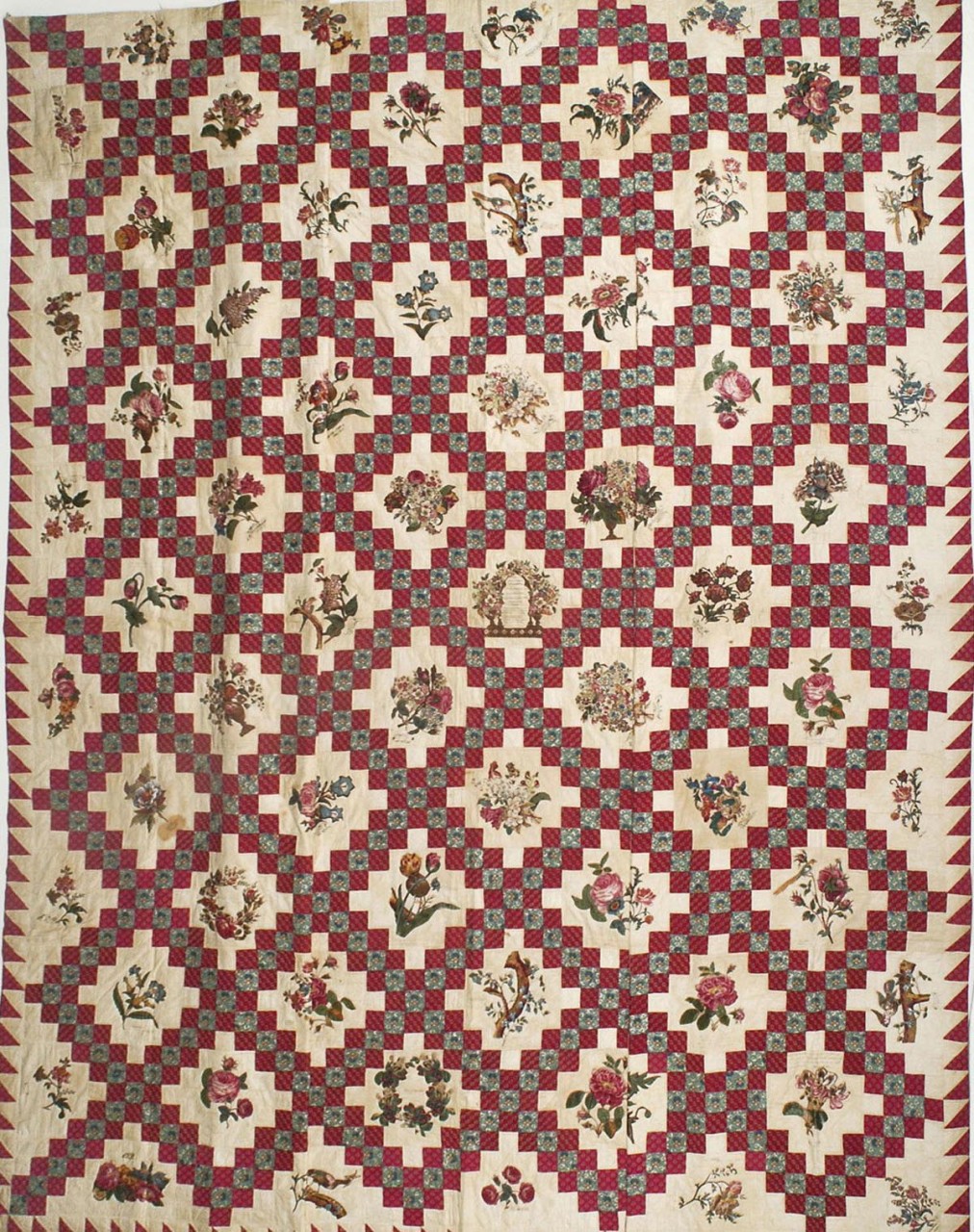
Dr. Carolyn Ducy at the International Quilt Museum started the connections between some NSCA quilts by connecting the Emma Fish Album Quilt (Daughters of the American Revolution Museum), Emmeline Fish Album Quilt (International Quilt Museum), and the Fish/Perrine Album Quilt (Denver Art Museum). Through the Taylors and Machette/Vallettes we are showing connections to the Machette & Taylor Coverlet (Poos Collection), and the Machette/Vallette Album Coverlet (auction quilt.) Potentially the Sarah Flickwir Album Quilt (Philadelphia Museum of Art) is also connected through the Taylors, but we hope to be able to confirm that with an in-person research trip the end of May. Additionally, several of these families were connected through businesses. Benjamin Fish and Samuel Stryker were listed as managers of the Trenton Manufacturing Company in a June 22, 1836 Philadelphia Public Ledger article. Samuel Stryker and...





